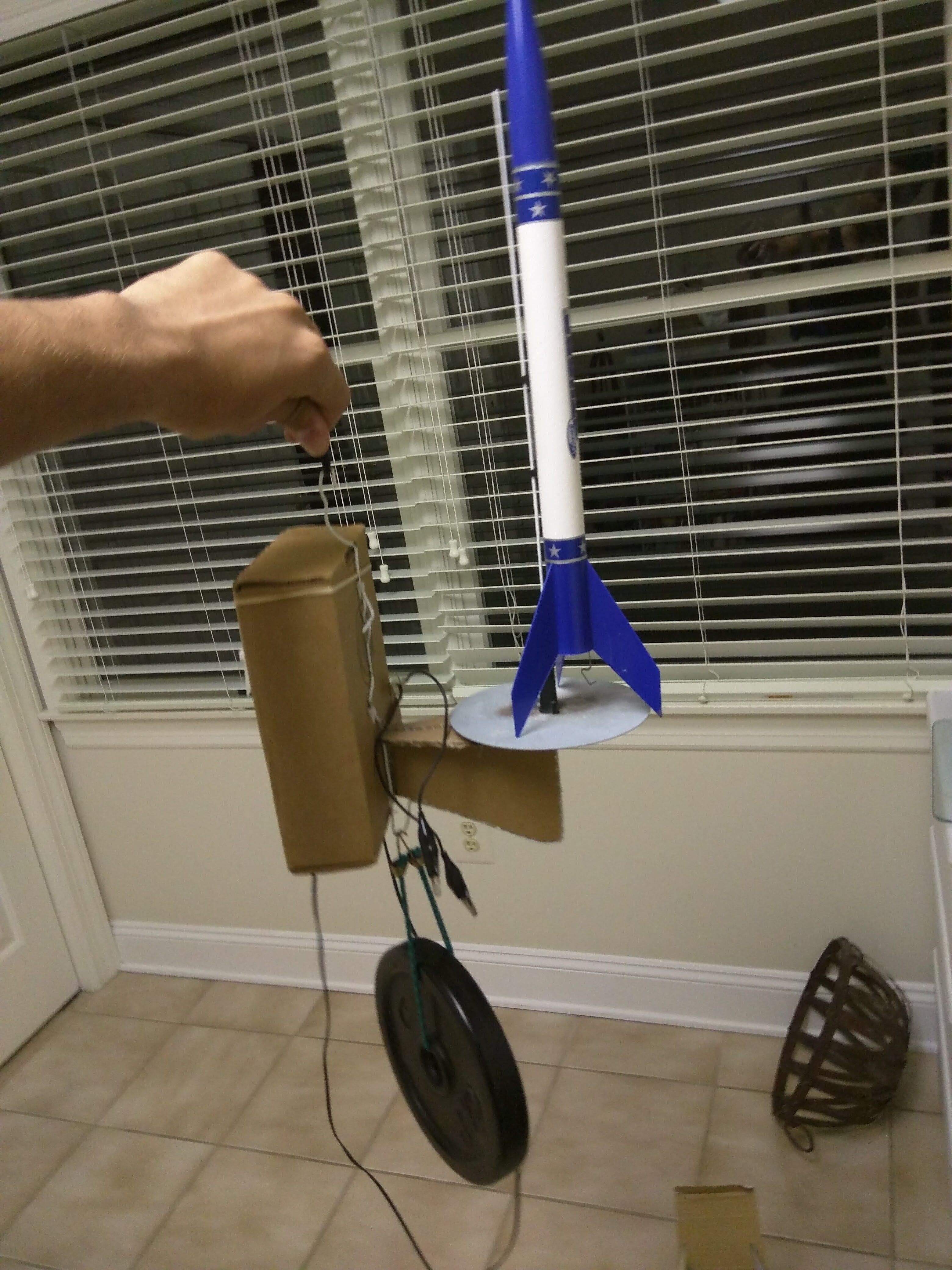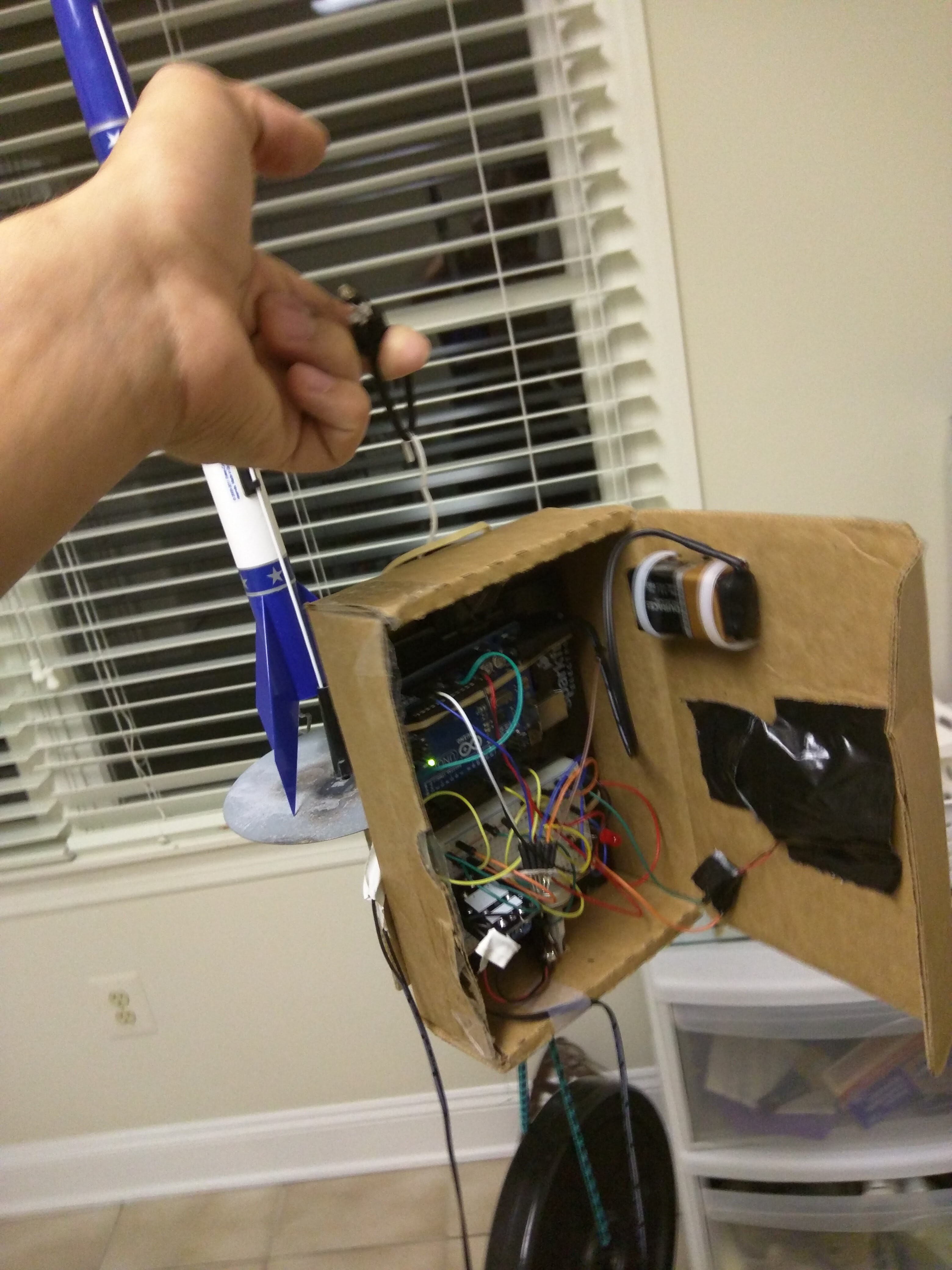The next goal was to get the altimeter to activate when the rocket was at a certain height, and then launch the rocket. To test this, I build an altitude-activated launch platform. I stuffed all the electronics into the box that the altimeter came in, and I attached it to a coat hanger. The hanger had a suspension point, a point to hang a stabilizing mass, and it was bent upwards for a launch rod. The whole thing was suspended from paracord coming from a rake at the top of a ladder. A broom handle was used to prevent the platform from rotating.


The planned launch day had to be postponed because of the rain. It worked out quite nicely, however, because after testing the platform in the garage I realized that the wind was seriously screwing up the barometer readings. I ended up needing an additional Sunday afternoon/evening to figure out how to use some coding to prevent this. Realistically, this shouldn't be a problem for the final project, because if the altitude reading is off by a few meters, it shouldn't be a big deal. However, for the purposes of this test, where the change in altitude was only 1.2 meters, it had to be fixed. The code took more accurate baseline readings by allowing you to close the cardboard box first, then averaging together 10 consecutive readings taken with a second in between each reading. In order for the launch code to run, the altimeter had to read 8 consecutive and acceptable altitude measurements, with 4 readings being taken every second.
The planned launch day was beautifully sunny, relatively not windy, and a nice 65 degrees F. It seemed like the universe was on my side today.
During the first launch, I lifted the rocket on the rig, the altimeter activated, the buzzer beeped, and the igniter ignited. I saw a flash from the match head, but no rocket engine ignition. I believe that this is due to the position of the igniter in the engine. When I bore out the hole in the engine, I only widened the nozzle, not the hole in the propellant, preventing the igniter from getting deep enough inside of the rocket.
I tried again with a stock Estes rocket igniter, and it worked like a charm. Altimeter activation was functional, but the homemade ignition is going to need more work.
 Julian Costas
Julian Costas
Discussions
Become a Hackaday.io Member
Create an account to leave a comment. Already have an account? Log In.